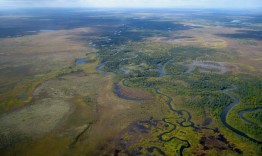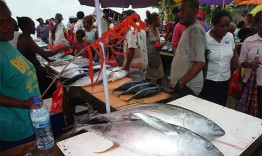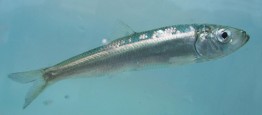Scientists from Aquatic and Fishery Sciences and other institutions are learning a lot about where Chinook salmon swim in Alaska’s Bristol Bay region through chemical signatures recorded in their ear bones. Similar to a tree’s growth rings, this bone—called an otolith—accumulates layers as the fish grows. Acting as a little recorder, each layer of the otolith corresponds to the unique chemical signatures of the waters in which they swam.
Read more at UW Today »New knowledge and technology help scientists track harmful algae
Though the waters of Puget Sound are full of beneficial algae, which provide oxygen, food, and shelter for other creatures, it’s the nasty ones that usually make the news, when they "bloom" into toxic pools, harming fish and humans. Now, researchers working with Washington Sea Grant have started to narrow in on harmful algae’s behaviors, and are developing some slick techniques that they hope will lead to much more effective detection and monitoring.
Read more »Fishermen, communities need more than healthy fish stocks
Aquatic and Fishery Sciences’ Chris Anderson and a team of scientists have developed a new assessment that looks at fisheries’ economic and community benefits, as well as ecological health. Anderson and his team created new ways of measuring three performance indicators – ecology, economics, and community – all of which can be applied across species, management approaches, and nations. To characterize a fishery, the authors drew on local experts’ knowledge, scoring each response and averaging them in each category.
Read more at UW Today »Sustainability progress should precede seafood market access, researchers urge
A team of researchers, including Edward Allison from the College of the Environment’s School of Marine and Environmental Affairs, has evaluated fishery improvement projects designed to bring seafood from wild fisheries to the certified market while promising sustainability in the future. In a policy paper appearing May 1 in Science, the team concluded that these projects need to be fine tuned to ensure that fisheries are delivering on their promises.
Read more at UW Today »New research suggests forage fish populations negatively impacted by fisheries
A new study by Tim Essington, Aquatic and Fishery Sciences, shows for the first time that fishing likely worsens population collapses in several species of forage fish, including herring, anchovies, and sardines. Some of the largest fisheries in the world target these species, which are also a key food source for larger marine animals like salmon, tuna, seabirds, and whales. Previously, it wasn’t known whether population collapses and other population shifts in forage fish were naturally-occurring or related to fishing.
Read more at UW Today »





